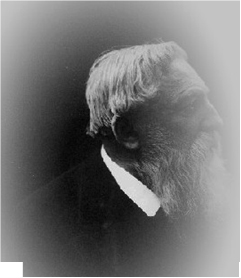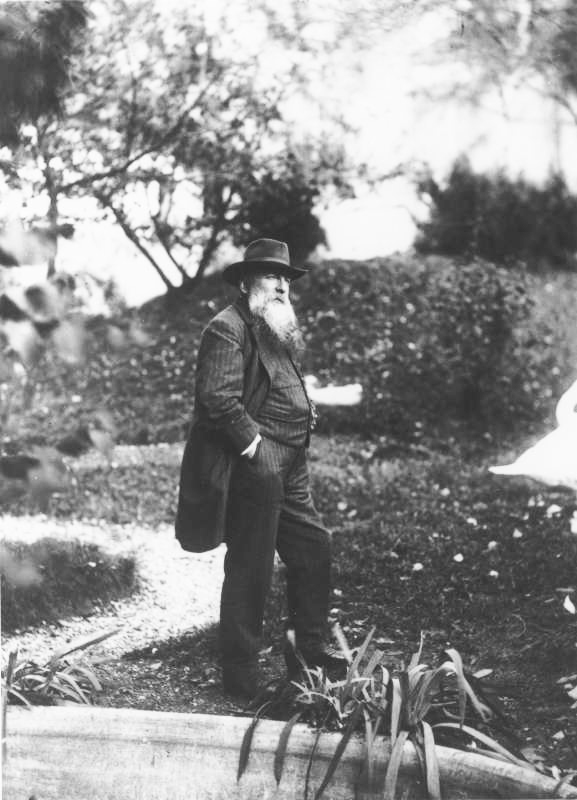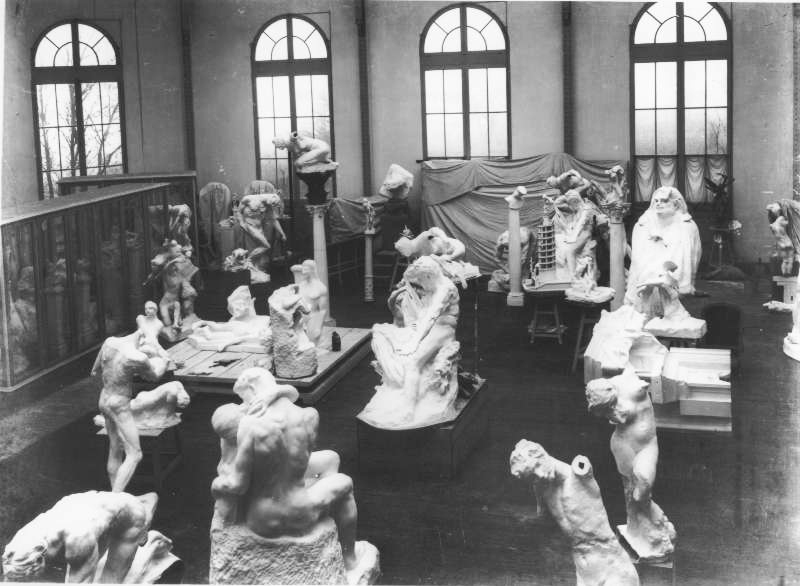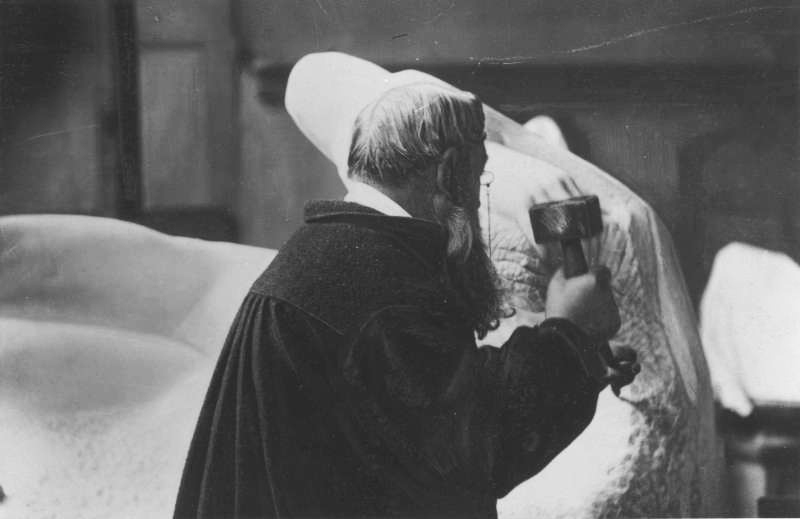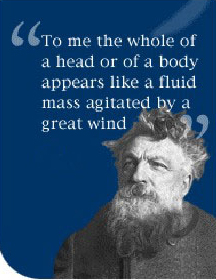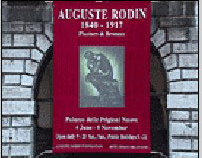 home
about
artists
exhibitions
press
contact
purchase
home
about
artists
exhibitions
press
contact
purchase |
||||||||
|
AUGUSTE RODIN Declaration Posthumous Cast at the Guastini foundry located in Gambarella in the province of Vicenza These bronzes were cast in about the year 2000 from the collection of foundry plasters assembled by the Italian collector Gruppo Mondiale over several decades largely from the heirs of Rodin's preferred founder, Rudier, namely Alexis Rudier Foundeur, Paris; Eugene Rudier, Paris; Georges Rudier, Paris; and Private collection (France), with the intention of producing a limited edition of posthumous Rodin bronzes of the highest quality. Using the finest craftsman and techniques developed by Rodin's fondeurs, this posthumous collection of bronze casts was created with the utmost attention to the details, size, and patinas which exist in bronzes supervised by the artist during his lifetime. With this purpose in mind, lifetime casts were examined, and the foundry plasters selected were those which maintained the details and quality of Rodin's best works. Plaster was the form in which Rodin recorded his genius. First modelling in clay, which disintegrates over time, Rodin recorded a composition's important stages and finished form by making a negative mould (un moule ban creu} from the clay. During his career, Rodin pulled hundreds of moulds from his clay models. He then made plaster casts from these moulds, casts that he would sometimes modify. A plaster was always the starting point for further innovations in the composition or replication in bronze. Rodin favoured plaster not only for experiments and improvements of a work but for first exhibitions in the Paris Salons and gifts to friends and patrons; he is also known to have sold a number of his plaster casts. On his death Rodin left a large number of casts and plasters, many now preserved in his former studio in Paris, the Hotel Biron (now the Musée Rodin) and at the Villa des Brillants, Rodin's home and studio at Meudon. The goal of the Gruppo Mondiale Est. project has been to create high-quality posthumous examples of some of Rodin's most significant works. These examples include, among others, such universally renowned figures as "The Age of Bronze", "Eve", "The Kiss", "Nijinsky", "Balzac" and "The Thinker," often in more than one size. These posthumous Rodin casts were made using the lost wax process — cire perdue - (the process preferred by Auguste Rodin) from foundry plasters. All casts were made under the direction and supervision of experts and done in one of the finest foundries located in Italy, Master Limited Edition in Guastini. All processes and techniques replicate in exact details of those used by the artist during his lifetime. These casts are equal practically in all details to lifetime casts and are among the finest casts ever done from this remarkable artist. All patinas were done using the same chemicals and techniques of the lifetime works and are practically identical to lifetime casts. A book, Rodin Plasters and Bronzes, was published in 1999 documenting the history of the foundry plasters used for the present collection of casts, the high quality, validity, and importance of it, and of the posthumous bronze casts derived from it. The posthumous casts from this collection of foundry plasters present the only realistic opportunity for most collectors to own extremely fine bronzes of a number of Rodin's most important works cast from foundry plasters. Life-time casts are expensive and only rarely appear for sale (one made $ 18.9m in 2008) and even later casts created by the Musée Rodin frequently attract prices beyond most peoples' means. The present posthumous casts are stamped ‘reproduction’ in accordance with the requirements of the Musée Rodin (and the French law of 1981) which up till 1989 held the copyright to Rodin's works. The copyright on Rodin's works expired in 1989 and high-quality casts from foundry plasters, such as the present ones, especially of otherwise unobtainable works, will, we believe, command respect, as those for other artists have proved to be. Rodin died in 1917, and all copyright rights in his works, including the plasters used for the Gruppo Mondiale casts and the works created with them, terminated worldwide in 1987 with exception of France, which terminated in 1989 for reasons particular to France's national history. Rodin's work thereafter passed into the public domain. Many of the Rodin bronzes found in museums and public exhibitions have been cast after the life of the artist, and the vast majority of the bronzes that currently come to the market place today, whether in auction or being sold in a gallery are posthumously cast. Until the expiry of the international copyright in 1989, the Musée Rodin (as agent of Rodin's official heir, the French state) could claim that only lifetime casts and those issued under its imprimatur could qualify as authorised and hence its insistence on others bearing a stamp ‘reproduction’ which this collection carries to comply with the French decree of 1981 requiring such a description (‘All facsimiles, casts of casts, copies and other reproductions of an original work of art as set out in...Appendix III of the General Code of Taxes, executed after the date of effectiveness of the present decree, must carry in a visible and indelible manner the notation "Reproduction"’). Following the casting of the present editions the owners of the collection of plasters from which the pieces were cast, by that time a group of Canadian collectors, donated it to the McLaren Art Centre, Barrie, Canada, and they were exhibited with others works from other sources the Royal Ontario Museum in Toronto from September to December 2001. This declaration is based on the information and documents presented to Hay Hill Gallery by Gary Snell, Director of Gruppo Mondiale, i.e. Declarations of Authentication signed by David Schaff of David Schaff Ltd, USA, copy of the letter of the Director of the Musée Rodin Jacques Vilain of 23/08/2000, etc. Introduction Auguste Rodin is generally recognized as the most important sculptor artist of the nineteenth century and of Western man. By 1890 Rodin had become the most renowned sculptor in France; by 1900 he had achieved international recognition and today is considered the world’s most recognized sculptor artist. He is the father of modern sculpture, yet has conquered both traditional forms as well as modern forms in his unparalleled body of work. His innovations in form and subject matter, established his reputation as the first master of modern sculpture. Rodin's fame and productivity have been matched by only one artist in the twentieth century, Pablo Picasso. Convinced early on that he was a great artist, Rodin was as determined to establish his reputation as he was prolific and audacious in his production. From 1872 to 1885 Rodin worked incessantly until he gained the status and network necessary to produce major commissions. Auguste Rodin is without peer when it comes to worldwide recognition. He has created a body of work so universally recognized that sculptures such as The Kiss and The Thinker have become icons of the twentieth century. Photographs of Auguste Rodin
Past Exhibitions
15 December 1999 - 13 February 2000: Palazzo Isolani, Via Santo Stefano, 16 - Bologna (Sponsored by Minister of Culture and Minister of Education, Comune di Bologna) 3 June 2000 - 8 November 2000: Palazzo delle Prigioni Nuove, San Marco - Venezia
7 March 2003 – 31 May
2003: Artrium,
2, rue de la Confederation - Geneva (Sponsored by UBS Bank)
19 June 2003 - 11
August 2003: Knonau Castle - Switzerland
26 June 2003: Domino Club – Bologna
24 August 2003 – 23 November 2003:
Erwin Rehmann Museum, Laufenburg - Switzerland
Books
Two books have been
produced documenting the history of the plasters, the high quality,
validity and importance of this collection, and the bronze casts
derived there from. The first book was printed by Arti Grafiche
Amilcare Pizzi S.p.A., one of the premier art book printers, with
contributions from notable people and photographic work by Mario
Carrieri (considered the foremost photographer of sculpture). This
book received the prestigious “Fedrigoni Award” for the best art
book produced in 2000.
The
book documents the history of the foundry plasters and the bronze
casts derived from them to confirm the high quality, validity and
importance of this Rodin collection
The second book has
been prepared with important contributions by the Rodin experts
Catherine Lampert and Dr. Leo Steinberg and photographic work by
Mario Carrieri, but is awaiting printing, allowing for the
possibility of sponsorship and mention in this superb
publication. Meridian Printing, in the United States, considered the
foremost Art book printer, has been chosen to print this spectacular
book. |
||||||||
